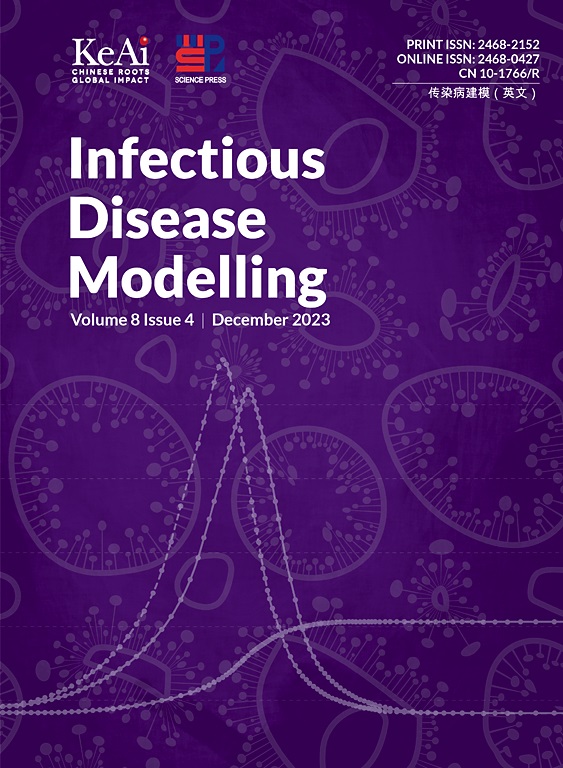Epidemiological indices with multiple circulating pathogen strains
IF 2.5
3区 医学
Q1 Medicine
引用次数: 0
Abstract
Epidemiological indicators (e.g. reproduction numbers and epidemicity indices) describe long- and short-term behaviour of ongoing epidemics. Their evolving values provide context for designing control measures because maintaining both indices below suitable thresholds warrants waning infection numbers. However, current models for the computation of epidemiological metrics do not consider the stratification of the pathogen into variants endowed with different infectivity and epidemiological severity. This is the case, in particular, with SARS-CoV-2 infections. Failing to account for the variety of epidemiological features of emerging variants prevents epidemiological indices from spotting the possible onset of uncontrolled growth of specific variants, thus significantly limiting the prognostic value of the indicators. Here, we expand an existing framework for the computation of spatially explicit reproduction numbers and epidemicity indices to account for arising variants. By analysing the data of the COVID-19 pandemic in Italy, we show that embedding additional layers of complexity in the mathematical descriptions of unfolding epidemics reveals new angles. In particular, we find epidemiological metrics significantly exceeding their thresholds at the emergence of new variants. Such values foresee a recrudescence in new infections that only becomes evident after emerging new variants have effectively replaced the previous active strains. The demography of the variant composition flags the presence of specific strains growing more rapidly than the total number of infections generated by all variants combined. Variant-aware epidemiological indicators thus allow to engineer better control measures tailored to the shifting patterns of severity and evolving features of infectious disease epidemics.
多流行病原菌流行病学指标
流行病学指标(如繁殖数和流行指数)描述正在发生的流行病的长期和短期行为。它们不断变化的数值为设计控制措施提供了背景,因为将这两项指数保持在合适的阈值以下就可以保证感染人数减少。然而,目前计算流行病学指标的模型并未考虑将病原体分层为具有不同传染性和流行病学严重程度的变体。SARS-CoV-2感染尤其如此。如果不能解释新出现变异的各种流行病学特征,流行病学指数就无法发现特定变异失控增长的可能开始,从而大大限制了这些指标的预测价值。在这里,我们扩展了用于计算空间显式繁殖数和流行指数的现有框架,以考虑出现的变体。通过分析意大利COVID-19大流行的数据,我们表明,在对流行病展开的数学描述中嵌入额外的复杂性层,揭示了新的角度。特别是,我们发现流行病学指标在新变异出现时显著超过其阈值。这些值预示着新感染的复发,只有在出现新的变体有效地取代以前的活性菌株后才会变得明显。变异组成的人口统计学标志着特定菌株的存在比所有变异所产生的感染总数的总和增长得更快。因此,能够识别变异的流行病学指标能够设计出更好的控制措施,以适应传染病流行严重程度的变化模式和不断演变的特征。
本文章由计算机程序翻译,如有差异,请以英文原文为准。
求助全文
约1分钟内获得全文
求助全文
来源期刊

Infectious Disease Modelling
Mathematics-Applied Mathematics
CiteScore
17.00
自引率
3.40%
发文量
73
审稿时长
17 weeks
期刊介绍:
Infectious Disease Modelling is an open access journal that undergoes peer-review. Its main objective is to facilitate research that combines mathematical modelling, retrieval and analysis of infection disease data, and public health decision support. The journal actively encourages original research that improves this interface, as well as review articles that highlight innovative methodologies relevant to data collection, informatics, and policy making in the field of public health.
 求助内容:
求助内容: 应助结果提醒方式:
应助结果提醒方式:


